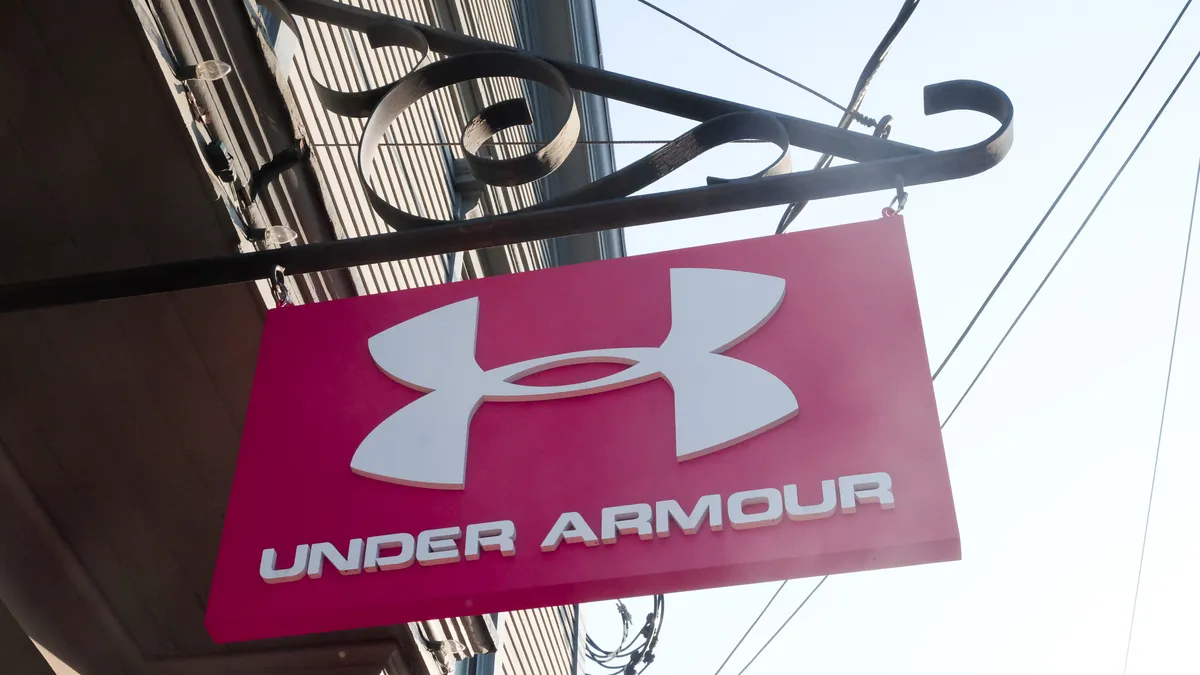Dive Brief:
- Under Armour is laying off an unspecified amount of staff as it focuses on streamlining the business. The cuts come as part of a larger restructuring plan, which will cost between $70 million and $90 million, including millions in employee severance costs. The company declined to comment on how many positions will be impacted and in what areas of the business.
- The announcement comes on founder Kevin Plank’s first earnings call after taking back the CEO spot in March. The executive also said Under Armour is eliminating products that don’t meet its standards, with an aim of cutting SKU count by 25% over the next 18 months, and reprioritizing innovation.
- The company reported a 5% revenue decline in Q4, to $1.3 billion, with revenue down 3% for the full year, to $5.7 billion. Net income for Q4 was $6.6 million, down 96% year over year, and for the year was $232 million, down 38%. Under Armour expects revenue to be down by double digits in 2025, including an expected drop of up to 17% in North America.
Dive Insight:
Under Armour’s founder is back and taking the retailer to task for poor performance he said was mostly “self-inflicted” since he stepped down four years ago.
“This is not where I envisioned Under Armour playing at this point in our journey,” Plank said on the call, which included widespread critiques of Under Armour’s strategy and execution over the last few years.
Among his comments, Plank said the retailer is “overly siloed and bureaucratic,” has competing internal agendas and that ongoing turnover in leadership has been “central to our inability to stay agile and decisive.” In addition to streamlining internal operations, Plank said the brand is cutting agencies, consultants and other outside experts, which have grown to “unacceptable levels,” and reducing meetings and other distractions at the corporate level.
The brand is searching for a new chief marketing officer, has consolidated its global and North American marketing teams and is reorganizing its product and marketing teams around its largest revenue categories as it looks to improve brand storytelling and shift away from discounts. Under Armour has become too promotional, especially in North America, according to Plank, and the retailer will cut the sitewide promotional days on its website by 50% this year. The company’s new head of North America, Kara Trent, will simplify that business to focus on digital, premium wholesale partners and team sports.
Long-term, Under Armour plans to “sell much more of much fewer products,” which will mean slashing its SKU count, and will reprioritize innovation to become “a brand of launches.” Plank said the brand is already doing this, but “the larger problem is that you’ve probably never heard about any or most of them,” vowing to put more storytelling behind big product launches. A new store concept is also being piloted that features less product and more storytelling. Plank lambasted Under Armour’s product strategy, saying the brand identified too many product areas as priorities, didn’t communicate its product advantages to shoppers effectively and took its eyes off men’s apparel, hampering the business.
To correct that, Under Armour will make men’s the main priority again, though Plank said that doesn’t mean the retailer will ignore women’s and footwear. The retailer will also develop a line of exclusive products for its DTC business and will overhaul its product descriptions and tags. New product will likely not hit stores until the fall-winter collection of 2025.
GlobalData Managing Director Neil Saunders holds a similar view that Under Armour’s challenges are largely self-inflicted and also emphasized innovation as an area the brand needs to do better in.
“The string of weak numbers reflects the tangle that Under Armour has gotten itself into both strategically and in terms of the vision for its brand. In our view, there is not nearly enough product innovation, especially in important categories like sneakers, which has put Under Armour on the back foot as newer players like On and Hoka are churning out products that inspire and interest consumers,” Saunders said in emailed comments. “On apparel, ranges continue to be confusing as Under Armour jumps between trying to provide technical solutions and trying to appeal to those wanting fashion fixes.”
Saunders noted that Plank’s return is not an “automatic resolution” to these issues, but said the management team is showing signs of dealing with its lack of focus.
“However, the difficulties of the journey should not be underestimated. It will take time to reposition the brand, and successful execution will require some painful decisions that will negatively impact the numbers,” Saunders said. “As such, the year ahead is going to be a very painful one for Under Armour.”
Plank, though, expressed hope for the company’s future. “We have an incredible foundation from which to reconstitute a winning culture,” he said. “And while I have no delusions that this is to be a repeat of how this brand was built the first time, there are certainly parts that will rhyme — and I plan to use every tool of resource or experience available to me and UA to make us successful.”















